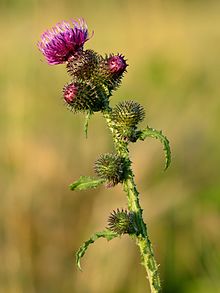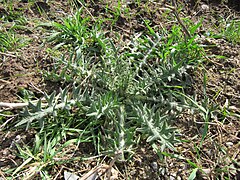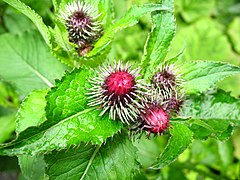
Medicago is a genus of flowering plants, commonly known as medick or burclover, in the legume family (Fabaceae). It contains at least 87 species and is distributed mainly around the Mediterranean Basin, and extending across temperate Eurasia and sub-Saharan Africa. The best-known member of the genus is alfalfa, an important forage crop, and the genus name is based on the Latin name for that plant, medica, from Greek: μηδική (πόα) Median (grass). Most members of the genus are low, creeping herbs, resembling clover, but with burs. However, alfalfa grows to a height of 1 meter, and tree medick is a shrub. Members of the genus are known to produce bioactive compounds such as medicarpin and medicagenic acid. Chromosome numbers in Medicago range from 2n = 14 to 48.

Genista is a genus of flowering plants in the legume family Fabaceae, native to open habitats such as moorland and pasture in Europe and western Asia. They include species commonly called broom, though the term may also refer to other genera, including Cytisus and Chamaecytisus. Brooms in other genera are sometimes considered synonymous with Genista: Echinospartum, Retama, Spartium, Stauracanthus, and Ulex.

The genus Carthamus, the distaff thistles, includes plants in the family Asteraceae. The group is native to Europe, North Africa, and parts of Asia. The flower has been used since ancient times in the Philippines, which it has been called kasubha by the Tagalog people.

Leontodon is a genus of plants in the tribe Cichorieae within the family Asteraceae, commonly known as hawkbits.
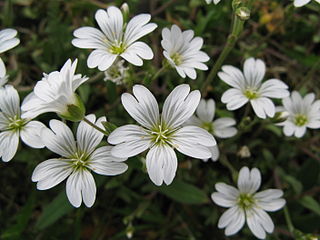
Cerastium is a genus of annual, winter annual, or perennial flowering plants belonging to the family Caryophyllaceae. They are commonly called mouse-ears or mouse-ear chickweeds. There are 214 accepted species, found nearly worldwide but with the greatest concentration in the northern temperate regions. A number of the species are common weeds in fields and on disturbed ground.

Anthyllis is a genus of flowering plants in the family Fabaceae. This genus contains both herbaceous and shrubby species and is distributed in Europe, the Middle East and North Africa. The most widespread and familiar species is A. vulneraria, a familiar grassland flower which has also been introduced to New Zealand.
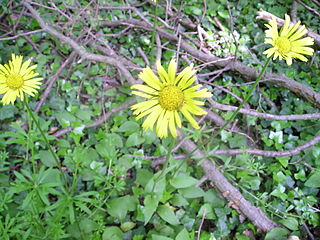
Doronicum is a genus of flowering plants in the sunflower family, known as leopard's bane. They are all herbaceous perennials native to Europe, southwest Asia and Siberia. They produce yellow, daisy-like flowerheads in spring and summer.
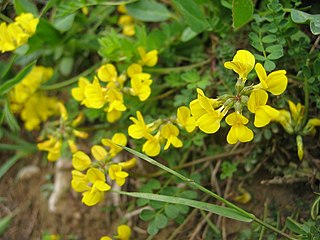
Hippocrepis is a genus of flowering plants in the legume family, Fabaceae. It includes 34 species native to Europe, northern Africa, and western Asia.

The Cardueae are a tribe of flowering plants in the daisy family (Asteraceae) and the subfamily Carduoideae. Most of them are commonly known as thistles; four of the best known genera are Carduus, Cynara, Cirsium, and Onopordum.
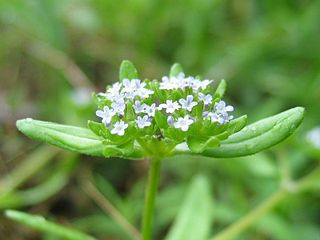
Valerianella is a genus of flowering plant in family Caprifoliaceae. Many plants of this genus are known by the common name corn salad or cornsalad, although that name most often refers to Valerianella locusta.

Jurinea is a genus of plants in the family Asteraceae.
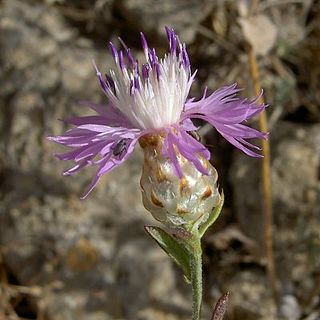
Centaurea alba is a species of Centaurea found in the Iberian Peninsula in southern and central Spain and in a small neighbouring area in the interior of Portugal. There are three recognised subspecies, and of one subspecies, the nominate, there are furthermore three varieties.

Hypericum sect. Adenosepalum is one of 36 sections in the genus Hypericum. Its type species is Hypericum montanum.
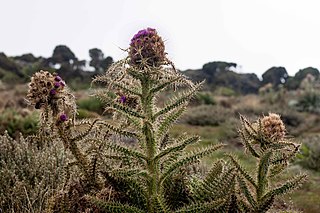
Afrocarduus is a genus of flowering plants in the sunflower family, Asteraceae. It includes ten species of thistles native to the mountains of tropical Africa, ranging from Nigeria to Ethiopia and Zimbabwe.
